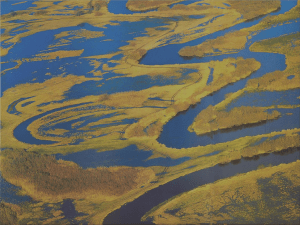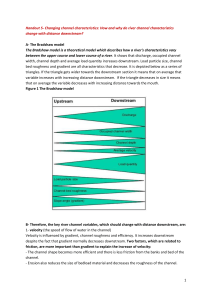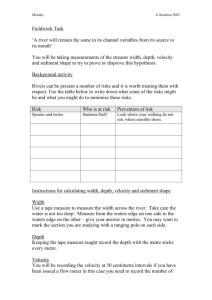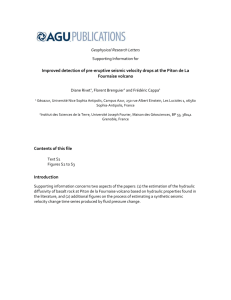Coursework Options: Urban study - IGCSE-Geography
advertisement
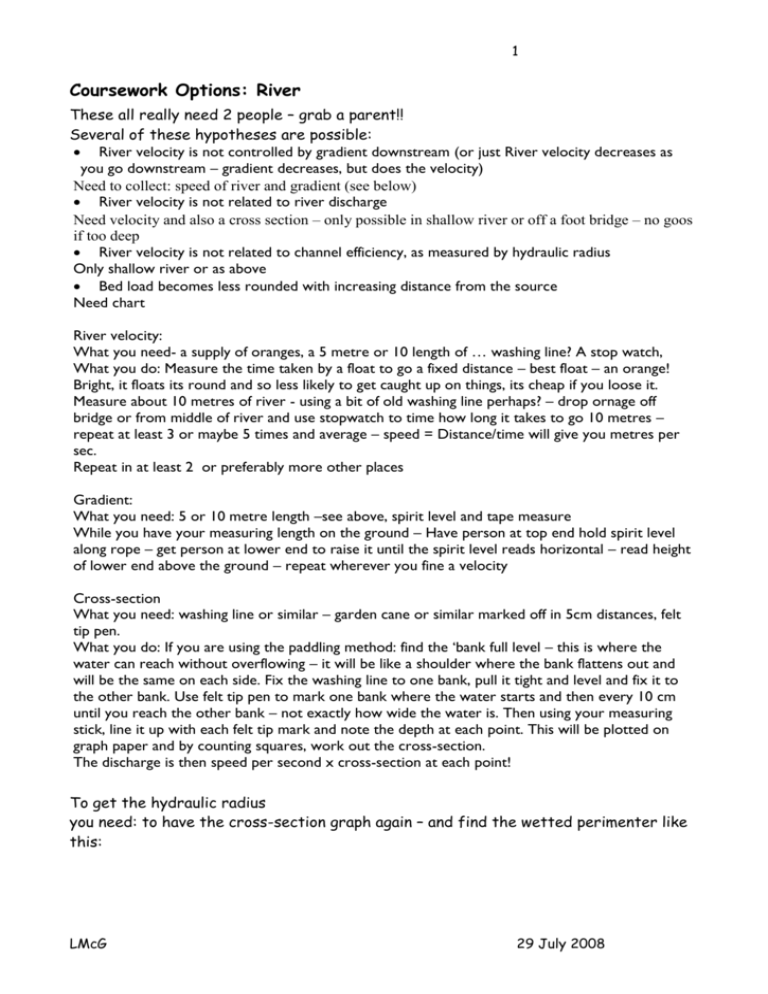
1 Coursework Options: River These all really need 2 people – grab a parent!! Several of these hypotheses are possible: River velocity is not controlled by gradient downstream (or just River velocity decreases as you go downstream – gradient decreases, but does the velocity) Need to collect: speed of river and gradient (see below) River velocity is not related to river discharge Need velocity and also a cross section – only possible in shallow river or off a foot bridge – no goos if too deep River velocity is not related to channel efficiency, as measured by hydraulic radius Only shallow river or as above Bed load becomes less rounded with increasing distance from the source Need chart River velocity: What you need- a supply of oranges, a 5 metre or 10 length of … washing line? A stop watch, What you do: Measure the time taken by a float to go a fixed distance – best float – an orange! Bright, it floats its round and so less likely to get caught up on things, its cheap if you loose it. Measure about 10 metres of river - using a bit of old washing line perhaps? – drop ornage off bridge or from middle of river and use stopwatch to time how long it takes to go 10 metres – repeat at least 3 or maybe 5 times and average – speed = Distance/time will give you metres per sec. Repeat in at least 2 or preferably more other places Gradient: What you need: 5 or 10 metre length –see above, spirit level and tape measure While you have your measuring length on the ground – Have person at top end hold spirit level along rope – get person at lower end to raise it until the spirit level reads horizontal – read height of lower end above the ground – repeat wherever you fine a velocity Cross-section What you need: washing line or similar – garden cane or similar marked off in 5cm distances, felt tip pen. What you do: If you are using the paddling method: find the ‘bank full level – this is where the water can reach without overflowing – it will be like a shoulder where the bank flattens out and will be the same on each side. Fix the washing line to one bank, pull it tight and level and fix it to the other bank. Use felt tip pen to mark one bank where the water starts and then every 10 cm until you reach the other bank – not exactly how wide the water is. Then using your measuring stick, line it up with each felt tip mark and note the depth at each point. This will be plotted on graph paper and by counting squares, work out the cross-section. The discharge is then speed per second x cross-section at each point! To get the hydraulic radius you need: to have the cross-section graph again – and find the wetted perimenter like this: LMcG 29 July 2008 2 Hydraulic radius = cross-sectional area divided by wetted perimeter The higher the number, the more efficient the river is at transporting the water through it – if the hydraulic radius is increased by smoothing out some of the bumps, then it is less likely to flood Now this last one I would say is the easiest! Using this stone board Classify each of a sample of 10 stones from several sites going down stream and measure the longitudinal axes. Work out a way to results maybe putting both results on the one graph? If so, use a different colour for each site and see if you can pick up a pattern. LMcG 29 July 2008








